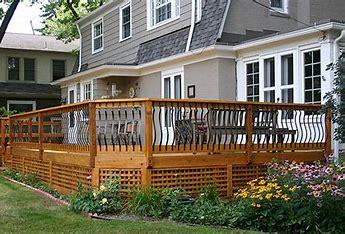Introduction:
Choosing the right material for your deck is a crucial decision that can impact the aesthetics, durability, and maintenance requirements of your outdoor space. Two popular options are composite decking and real timber decking. In this article, we will explore the pros and cons of each to help you make an informed decision.
Composite Decking:
Composite decking is a man-made material composed of a blend of wood fibers, plastic, and other materials. It has gained popularity for its low maintenance requirements and longevity.
Pros of Composite Decking:
-
Low Maintenance: One of the primary advantages of composite decking is its low maintenance requirements. It does not require sealing, staining, or painting, and it is resistant to rot and insects.
-
Durability: Composite decking is known for its durability and resistance to warping, splintering, and cracking. It can withstand harsh weather conditions, making it a long-lasting option.
-
Variety of Designs: Composite decking comes in a wide range of colors and styles, allowing homeowners to choose a design that complements their outdoor aesthetics.
-
Environmental Benefits: Many composite decking materials are made from recycled content, contributing to a more environmentally friendly option.
Cons of Composite Decking:
-
Cost: Composite decking can be more expensive upfront compared to real timber. However, the lower maintenance costs over time may offset the initial investment.
-
Heat Retention: Some composite decking materials may retain more heat than real timber, making them hot to the touch in direct sunlight.
Real Timber Decking:
Real timber decking, often made from hardwoods like cedar, redwood, or tropical hardwoods, provides a classic and natural look to outdoor spaces.
Pros of Real Timber Decking:
-
Aesthetic Appeal: Timber decking offers a natural, warm, and traditional look that many homeowners find appealing.
-
Cooler Surface: Timber generally stays cooler than composite materials, making it more comfortable to walk on during hot weather.
-
Repairability: If real timber decking gets damaged, individual boards can be replaced, offering a cost-effective solution for repairs.
-
Sustainability: Some timber decking options come from wood vs composite managed forests, providing an eco-friendly choice.
Cons of Real Timber Decking:
-
Maintenance Requirements: Timber decking typically requires more maintenance, including regular sealing, staining, and potential insect treatments.
-
Durability Concerns: Certain types of timber may be susceptible to rot, decay, and insect damage, especially if not properly maintained.
-
Limited Color Options: While real timber provides a natural look, it may have fewer color options compared to composite decking.
Conclusion:
Both composite and real timber decking have their advantages and disadvantages. The choice ultimately depends on your preferences, budget, and the level of maintenance you are willing to commit to. Consider the climate, desired aesthetics, and long-term costs when making your decision, ensuring that your chosen decking material aligns with your lifestyle and outdoor living needs.


